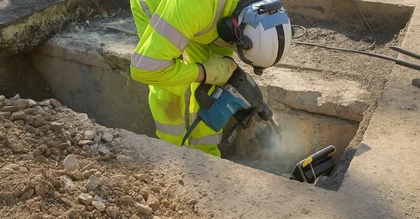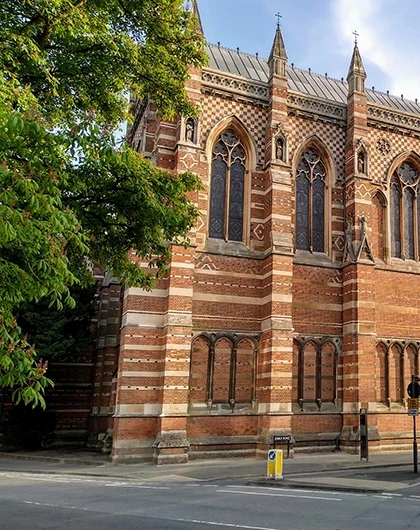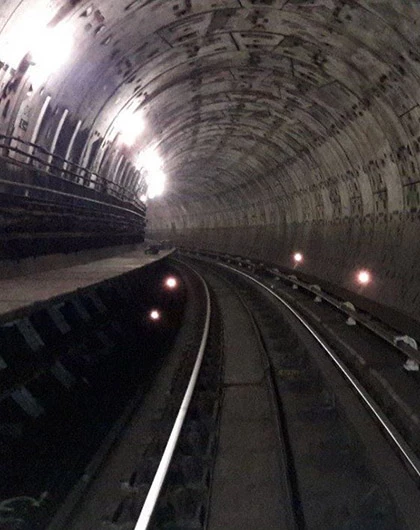CBR tests (California Bearing Ratio) to assess subgrade stiffness. Build roads that withstand the test of time.
Our California Bearing Ratio (CBR) testing service is designed to provide you with the critical information you need to make informed decisions. With our state-of-the-art equipment and experienced team, we ensure that you receive precise and dependable CBR values.
But what exactly is CBR testing, and why is it crucial? The California Bearing Ratio test measures the stiffness of the subgrade. By evaluating the ratio of the force required to penetrate the soil to a standard reference value, we can determine its suitability for road and pavement construction. This valuable information allows you to design roads that withstand the test of time.
Our priority is to deliver exceptional service that caters to your specific needs. We understand that every project is unique, and our expert team is here to guide you through the entire CBR testing process. From site assessment to analysis and reporting, we ensure a seamless experience that puts you at ease.
By choosing our team for your CBR testing needs, you gain access to a wealth of knowledge and expertise. Our commitment to accuracy, efficiency, and professionalism ensures that you receive results you can rely on.
Discover the Types of CBR Tests
We offer three reliable testing methods: the "Plunger" CBR test and the DCP (Dynamic Cone Penetrometer) test, and the Plate Load Equivalence CBR Test.
In the "Plunger" CBR test, we utilize a 50mm plunger that is gently pushed into the test surface. By comparing the resulting load for a standard penetration to a standard load/penetration, we can calculate the CBR value. Our experienced team operates a specialized 4x4 vehicle equipped with the necessary apparatus to conduct this test efficiently and accurately, following the guidelines outlined in BS1377-9:1990.
While the plunger test is effective for fine materials, it does have limitations when it comes to particles of larger sizes. To address this, a relationship has been developed based on the modulus of subgrade reaction obtained from the plate load test. This relationship allows us to provide equivalent CBR values for coarse granular materials, offering convenience and flexibility in our testing approach. For more information on plate loading testing, we encourage you to explore our dedicated page.
For projects that require a deeper assessment of multiple layers, especially when access is challenging, the DCP test is a preferred option. Using a metal cone and a sliding hammer, we drive the cone into the ground, achieving depths of up to 2 to 3 meters. By analysing the depth and the number of blows required for penetration at various strata, we can estimate the CBR value for each layer. This technique proves invaluable for pavement investigations and design in complex situations.
Our expert team is here to support you every step of the way. We understand the importance of accurate data in making informed decisions, and we are dedicated to providing you with reliable CBR values tailored to your specific materials and project requirements. Whether you opt for the "Plunger" CBR test or the DCP test, you can rely on our expertise and state-of-the-art equipment to deliver results you can trust.
CBR Test Procedure
The CBR testing procedure commences with specimen preparation. The soil sample to be tested is sieved through a 19mm sieve. The soil passing through can be used for the test, while the soil retained is replaced with an equal quantity of new soil.
Then, the test procedure follows. A standard piston is used to penetrate the soil at a steady rate of 1.25mm/minute. The applied pressure and the resulting displacement are measured and recorded.
The CBR value is then calculated by comparing the applied pressure to the pressure required for an equal penetration on a standard crushed rock material. The harder the surface, the higher the CBR value.
It's worth noting that this procedure might slightly vary depending on whether the test is conducted on a remoulded or undisturbed sample.
CBR value
The CBR value is a critical factor in the design and construction of roads and pavements. It provides a measure of the soil’s strength and bearing capacity, which is essential to assess its suitability for supporting the weight of traffic. The value is calculated as a percentage of the load required to penetrate a standard material, which is considered to have a CBR of 100%.
- For instance, a CBR value of 2% is typical for clay, indicating a relatively weak material.
- Sands may have a value around 10%, indicating a stronger material.
- High quality sub-base materials can have CBR values between 80% and 100%, demonstrating their excellent load-bearing capacity.
It's essential to note that these are general values and the actual CBR values can vary depending on the specific soil conditions and moisture content. Therefore, precise testing and analysis are crucial to ensure accurate data for your project.
CBR (California Bearing Ratio) values are calculated through a standardized laboratory test that measures the strength of a soil or aggregate material relative to its bearing capacity. This test is particularly important in civil engineering and road construction to assess the suitability of subgrade, base, and subbase materials for supporting roadways and pavements.
Here's a simplified explanation of how CBR values are calculated:
Sample Preparation: A soil or aggregate sample is collected from the site and prepared in the laboratory. The sample is typically compacted into a standard mold at various moisture contents and densities to simulate field conditions.
Test Procedure: The CBR test involves applying a compressive load to the sample in a controlled manner. The test is carried out using a cylindrical plunger of standard dimensions that is pressed into the compacted soil or aggregate at a steady rate.
Load Application: The load is gradually increased until the sample starts to deform. The deformation characteristics and applied load are recorded throughout the test.
Calculation: The CBR value is calculated as the ratio of the test load required to penetrate the soil or aggregate material at a certain depth to the standard load needed for the same penetration in a reference material (usually a crushed stone).
The formula for calculating CBR is:
CBR=Test Load (in kN)Standard Load (in kN)×100CBR=Standard Load (in kN)Test Load (in kN)×100
Typically, the CBR value is determined at different depths within a soil profile to assess its strength and suitability for construction purposes. Higher CBR values indicate stronger and more resilient materials capable of bearing heavier loads without excessive deformation.
Understanding the CBR values helps engineers make informed decisions about pavement design, material selection, and construction methods to ensure the durability and longevity of road infrastructure.

Not sure whether you need a Plate Bearing or CBR test? Find out here:
Our expert team offers a comprehensive package of field and laboratory testing services, including:
Want to find out more about SOCOTEC's Construction Materials Testing Services?
You might also be interested in:

Utility Coring - Understanding the Process

FAQ's: Your Guide To Understanding The Requirements Around RAAC

Celebrating Success: Recognition of Our Unique Culture at SOCOTEC UK










